Patio-Perfect Berry Bushes Like You’ve Never Seen
I have fond memories of my granddad’s garden. He grew all the fruit and vegetables for our family, and I spent many summer days helping him pick the sun-kissed berries, sampling more than a few as I worked! Even today the heady aroma of fresh, warm fruit takes me straight back to his large raspberry patch, which was unruly at best and an impenetrable thicket at worst. As tasty as these treats were, I couldn’t imagine ever having a garden large enough to accommodate growing my own.
Blueberries, on the other hand, are a relatively recent favorite. During my first visit to the United States in 1995, I was both surprised and delighted to see that it was perfectly acceptable to eat cake for breakfast! Or at least that’s how I thought of the delicious blueberry muffins to which I quickly became addicted. I would almost go as far as to say my love affair with blueberries was one of the deciding factors when we chose to move to the U.S. a year later. Yet again, however, it seemed that a great deal of space was needed to grow these bushes, so I had to content myself with buying them at the farmer’s markets.
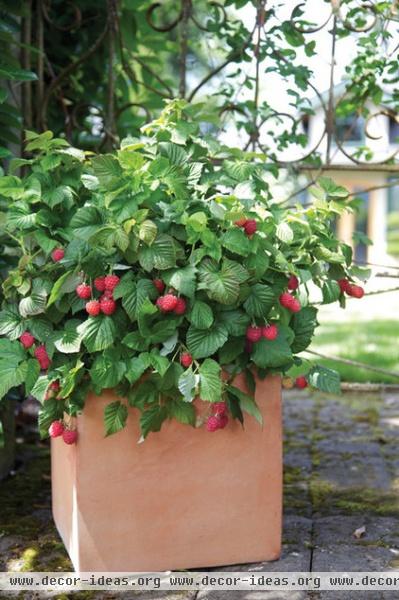
Imagine my delight when I discovered a wonderful collection of patio-appropriate fruit bushes called BrazelBerries. Their trademarked name was derived from a combination of the grower’s last name (Brazelton) and the fruit (berries).
These remarkable shrubs are highly ornamental and very easy to look after, will grow happily in a container or in the ground, and have sweet, juicy berries that are every bit as good as they look. Since there are four varieties to choose from and many ways to incorporate them into even the smallest space, I’m sure you’ll be joining me for a nostalgic trip down memory lane this summer as we feast on our juicy bounty.
Raspberry Shortcake
This is the perfect plant to grow in a big pot on the patio. Forget stakes, trellises and having to wear stout gloves — this remarkable bush grows to just 2 to 3 feet high and is thornless.
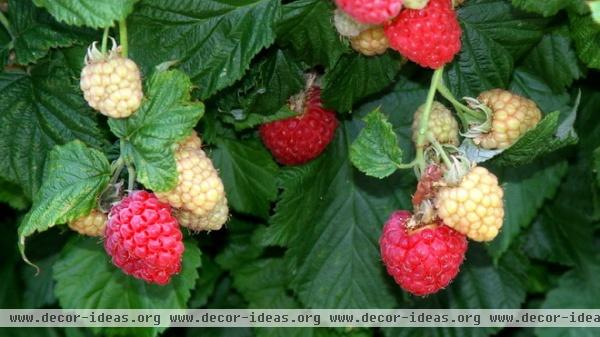
Where it will grow: Hardy to -20 degrees Fahrenheit (USDA zones 5 to 9; find your zone)
Water requirement: Average
Light requirement: Full sun
Harvest: Midsummer
Mature size: 2 to 3 feet tall and wide
Seasonal interest: Spring to fall
When to plant: Spring
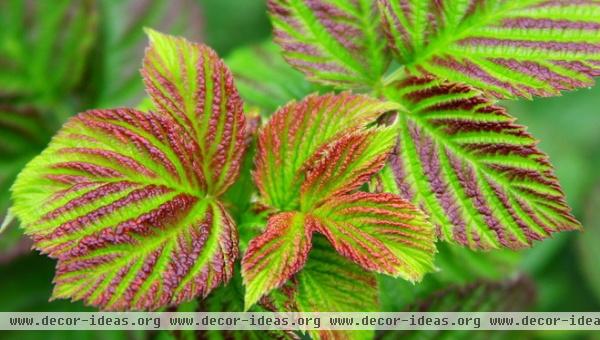
Distinguishing traits:
ThornlessDoes not need stakingMedium-size, sweet fruitFoliage has a beautiful variegation in summer in many climatesAttractive, unlike traditional raspberriesHow to use it. Avoid adding additional plants to the container, as the raspberry canes will quickly spread to fill the pot.
Planting notes:
Grow it in a large container to avoid the spread of suckers into the garden.Use potting soil that drains well and has a neutral pH.Fertilize with a balanced liquid fertilizer in early spring.Raspberries bear fruit on the second-year canes, so cut down all the canes that bore fruit the previous year during the winter.
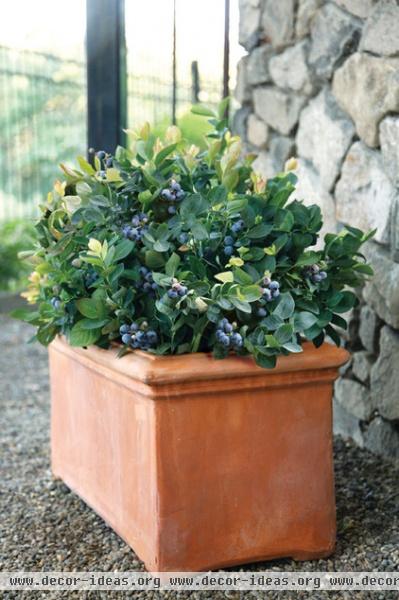
Peach Sorbet Blueberry
Offering delicious fruit and outstanding foliage, this new variety deserves a place in every garden. It is evergreen in most climates, with the leaves transitioning through shades of pink and coral in spring to fresh summer green and rich plum tones in winter.
Where it will grow: Hardy to -20 degrees Fahrenheit (zones 5 to 10)
Water requirement: Average
Light requirement: Full sun
Harvest: Midsummer
Mature size: 2 feet tall and wide
Seasonal interest: Year-round
When to plant: Spring
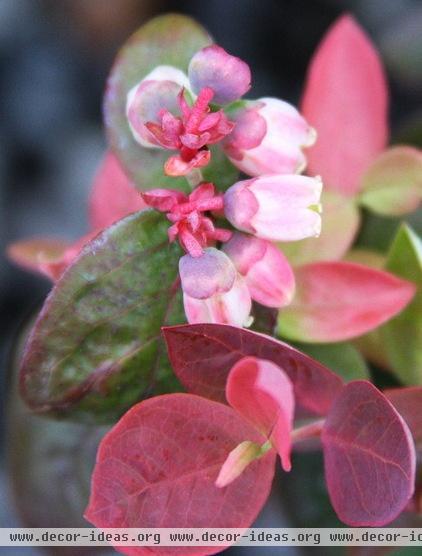
Distinguishing traits:
EvergreenStunning foliage colorCompactAttractive white bell-shaped flowersMedium-size, sweet fruitHow to use it:
In a container it is sufficiently ornamental to be a solo star, or add other plants in shades of lime, pink and white for a striking composition.Within a mixed border in the landscapeAs a low hedgePlanting notes:
For containers use potting soil that drains well. In the garden it needs soil with an acidic pH and that is moisture retentive but drains well.Fertilize in early spring using an organic fertilizer formulated for acid-loving plants.Like raspberries, blueberries bear fruit on the second-year canes. Cut off the canes that bore fruit the previous year during the winter.
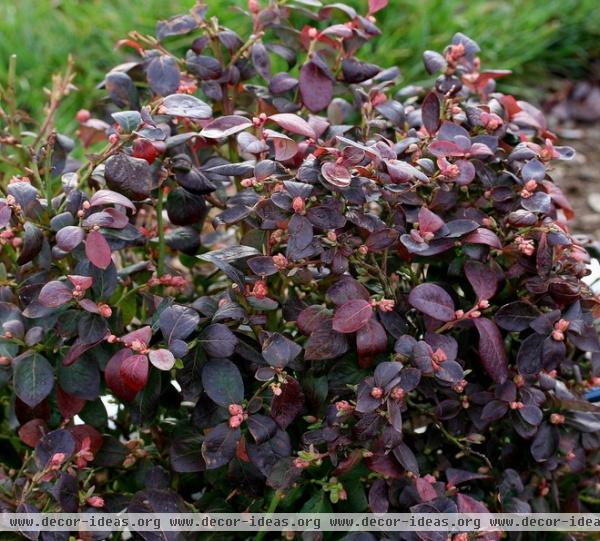
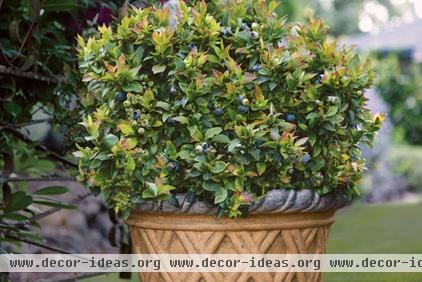
Jelly Bean Blueberry
Cute as a button. It may be small in size but it’s big in attitude, yielding plenty of plump berries. Even if you have only a balcony, you can grow Jelly Bean.
Where it will grow: Hardy to -30 degrees Fahrenheit (zones 4 to 8)
Water requirement: Average
Light requirement: Full sun
Harvest: Midsummer
Mature size: 1 foot to 2 feet tall and wide
Seasonal interest: Year-round
When to plant: Spring
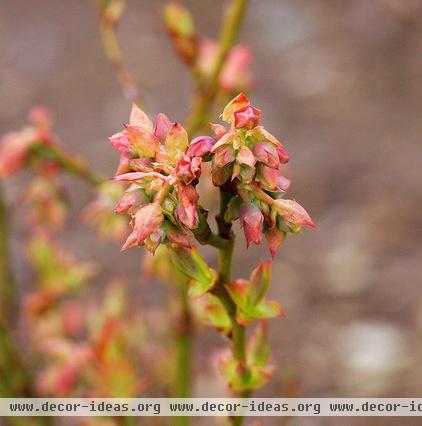
Distinguishing traits:
Great foliage colorCompactAttractive white bell-shaped flowersMedium- to large-size, sweet fruitHow to use it:
As an alternative to boxwood as a low hedgeIn containers, either on its own or in combination with other plantsWithin the landscape as a low-growing accent
Planting notes. Same as for Peach Sorbet.
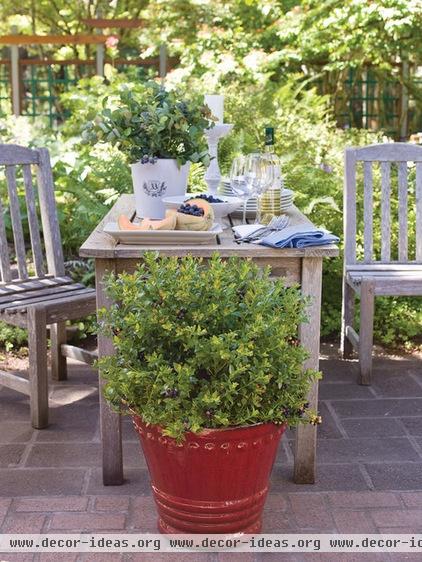
Blueberry Glaze
This is the only member of the BrazelBerry family that I have yet to try myself. It appears to have a looser growth habit than Jelly Bean and clusters of small, very dark blue fruit; the flavor is said to be reminiscent of wild berries.
Where it will grow: Hardy to -20 degrees Fahrenheit (zones 5 to 8)
Water requirement: Average
Light requirement: Full sun
Harvest: Midsummer
Mature size: 2 to 3 feet tall and wide
Seasonal interest: Spring to fall
When to plant: Spring
Distinguishing traits:
White and pink spring flowersAttractive foliageCan be sheared like boxwoodPlanting notes and uses. Same as for Jelly Bean Blueberry.
Find out more about BrazelBerries, including locating retailers
More: 5 Fall Fruits You Can Grow in Containers












